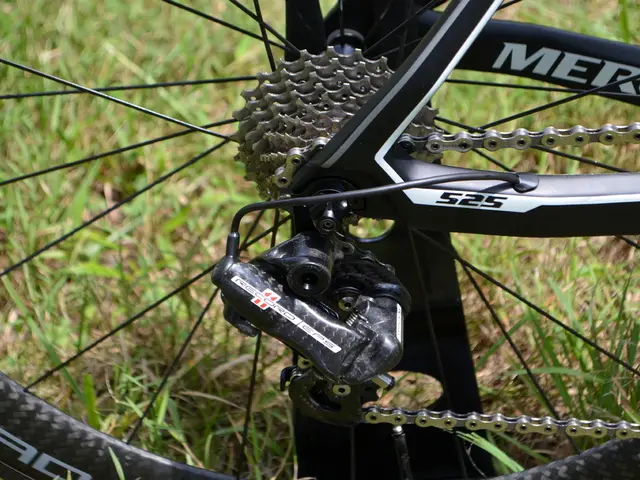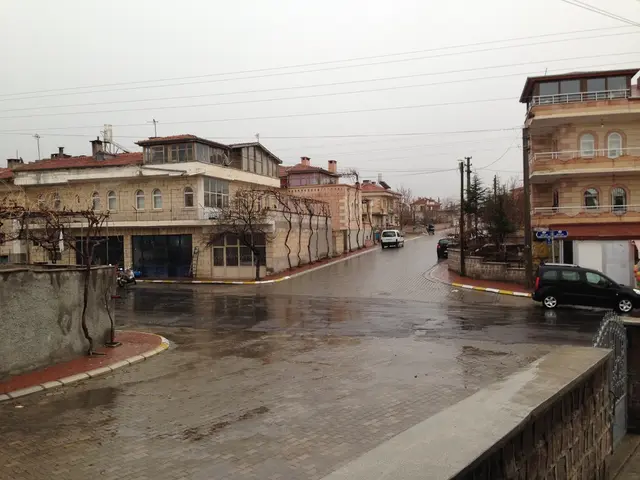Essential Guide for Selecting the Right Sleeping Bag for Your Adventure
Choosing the Ideal Sleeping Bag: A Comprehensive Guide
In most adventure trips, treks, and expeditions, a sleeping bag is an essential piece of equipment. With the multitude of options available in the market, selecting the right sleeping bag can be overwhelming. The primary factors to consider are the type of filling and the amount of insulation, based on the lowest anticipated temperature.
Sleeping bags function by trapping warm air around the user, mimicking the insulating properties of a duvet. Air is an inefficient heat conductor but an excellent insulator. In mountainous terrain, sleeping bags typically take a mummy shape, featuring a zip and drawstring for a snug fit.
The insulating properties of sleeping bags are compromised when they come into contact with your body weight, as you compress the material. Therefore, a suitable sleeping pad is crucial for providing adequate insulation on cold ground.
There are two primary types of insulation used in sleeping bags: down and synthetic.
Down insulation, derived from duck and goose feathers, offers advantages such as lightweight nature, durability, and compact packaging. However, it tends to be pricier, and when wet, it loses its insulating properties. A recent innovation called dry down has been introduced to address this issue; it features a hydrophobic coating that helps maintain the bag’s dryness.
Ethical considerations surround the use of down insulation, as it is obtained as a byproduct from the treatment of ducks and geese. Several manufacturers adhere to ethical down standards, ensuring the animals are treated humanely.
Synthetic insulation is often heavier and less compact, but it dries faster and retains some warmth when wet. Recent advancements have resulted in more lightweight synthetic insulation materials like Primaloft, Thermolite, Climashield, and Quallofil. Synthetic fill consists of short fibers and long filaments. Short fibers mimic the structure of down feathers but break down quickly with use, whereas long filaments are durable but do not compress well.
In making the filling decision, factors including weight, bulk, dampness, cold conditions, and cost should be considered. Down offers superior weight-to-warmth ratio in extremely cold temperatures, but synthetic insulation is more cost-effective and dries faster when wet.
Down insulation is available in various qualities, with eider duck down being the highest quality, followed by goose down and duck down. The down-to-feather ratio and fill power rating can also provide insight into a product’s insulating capacity.
Manufacturers may claim to source down ethically, while some have adopted codes of practice to ensure humane treatment of the birds. Interest in responsible sourcing is growing, with companies like Patagonia creating standards to guide their practices.
Sleeping bag temperature ratings are based on a measurement system that provides a range in upper limit, comfort temperature, lower limit, and extreme temperature. These ratings can help guide your decision, with the comfort rating being the most practical guideline for determining the sleeping bag's aptness for your personal cold tolerance.
Sleeping bags are also rated by seasons, offering a simplified comparison when purchasing. However, it is essential to consider the various factors of fill, temperature rating, intended use, and ethical considerations, as sleeping bags are long-term investments.
In addition to sleeping bags, appropriate sleeping mats are critical for insulating against the cold ground. Closed-cell foam mats are traditional and robust, while inflatable mats provide increased thickness and insulation, although they are susceptible to punctures.
Sleeping bag liners, made of materials like silk, synthetic fibers, or fleece, offer additional warmth, help keep the sleeping bag clean, and can be useful in moderating temperatures during various stages of a trip.
The dimensions of sleeping bags are important for those with specific body types or sleeping patterns. Shapes such as mummy or pod bags help minimize cold spots and provide efficient insulation, but some may find these designs constrictive.
Manufacturers may include features such as well-shaped hoods, independent neck baffles, and strategically placed insulation pockets to improve performance and eliminate cold spots. Quality zippers and zipper detailing are crucial to ensure ease of use and durability.
In caring for your sleeping bag, storing it in a dry place is ideal, and washing it infrequently using special washing liquids is recommended. Keeping the bag dry is essential, as moisture can degrade its performance. When carrying the sleeping bag, ensure it is protected in a waterproof stuff sack.
EnRoute Travel offers sleeping bag rental options for select expeditions, including Mount Kilimanjaro and Mount Elbrus, providing Highlander Serenity 350 or 450 synthetic bags suitable for cold weather conditions. For trips to Borneo, a cotton sleeping liner is typically used due to the hot and humid climate.
In the world of fashion-and-beauty and lifestyle, a sleeping bag might not be the usual topic of discussion, but for those embarking on travel, adventure, or trekking journeys – including expeditions like Mount Kilimanjaro or Mount Elbrus – they are essential pieces of equipment. The type of insulation, whether down or synthetic, plays a significant role in the sleeping bag's performance, especially in cold home-and-garden environments like mountainous terrain. To enhance durability and address down's moistened-state shortcomings, there's innovative technology like dry down insulation.
For tech enthusiasts and gadget-lovers, it's worth noting that there are advancements in synthetic insulation materials and insulated sleeping mats, offering improved comfort and insulation properties. Sleeping bag liners are another fashionable addition, providing extra warmth and acting as a barrier against dirt, while certain models catering to specific body types and sleeping patterns may prioritize fashion-and-beauty aesthetics.
When stowing away or traveling with a sleeping bag, give it the protective care it deserves with a waterproof stuff sack. To keep up with the latest trends in sleeping bag technology and insulation materials, follow the groundbreaking strides in the travel industry.








